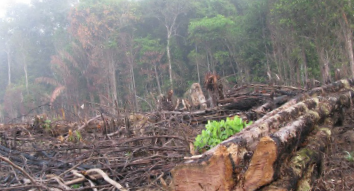THE UNTOUCHED INDIANS
1 Life in the developed world is enjoyable. We have clean water and quick access to the luxuries that the modern world offers us. However, there is a world of primitive tribes outside our beautiful landscapes. These tribes have primitive lifestyles and traditions that are rapidly decaying in the civilized world. In another hundred years there won’t be a single Bushman left in the world. The modern world is pushing everybody towards change, especially those whose lifestyles are against it.
2 One of the tribes facing a threat from the modern world is the untouched Indians who live in the Amazon. South America’s Amazon River basin stretches across two million square miles and contains the world’s largest rain forest. There lives a group of untouched Indians, who are living exactly as their ancestors have lived for thousands of years. These people refuse to contact with modern civilizations so that they can survive. The people, who are also called ‘voluntarily isolated,’ have a modest lifestyle. They are believed to be migratory groups who live on collecting seasonal resources, such as turtle eggs in dry seasons and nuts from trees in the rainy season.
3 Because they have little resistance to the illnesses of the outside world, these communities have suffered and faced death since they came into contact with Europeans in the 1500s. They are still weak to the illnesses carried by outsiders. They need vast areas of forest to move freely, obtain food and remain buffered from the dangers of the outside world.
4 Today, there are some lawyers and environmentalists in Peru who are trying to protect their isolation. These activists helped convince the authorities to establish a three-thousand square-mile reserve called “Madre de Dios” for their protection in 2002. In theory, this allows these people living on the reserve to live as they have lived for thousands of years.
5 The problem in this reserve is that the good intention to protect these people contradict with the social and economic reality of the region. This means while the people want to remain in isolation and follow their path of development, the energy industries want them to establish contact with the modern world in order to free up the resources in the reserve for the international market.
6 According to activists, the greatest threat to these tribes are the loggers who want to extract tropical hardwood. There is a great demand for this resource and in return, there has been an increase in the number of loggers. This leads to social unrest and even violent confrontations.
7 Activists fear that contact with loggers may spread illnesses, such as influenza. Also, increased settlement in the reserve may reduce hunting and fishing resources which means reducing their food resources. They also claim that oil and gas companies have started to investigate the area and this will cause many other problems for these people. It is estimated that the population of the villages has decreased from 30,000 to 1,500 since they first contacted the modern world. In the long run, it may ruin this culture completely.

